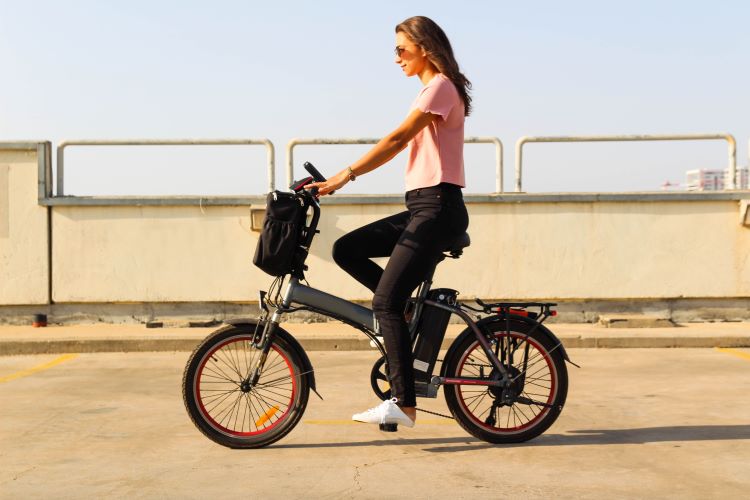Ride First, Finance Easy: The E-Bike Program
E-bike financing programs are arrangements that let payments be spread out over time instead of requiring the full cost upfront. These structures are sometimes discussed as ways people consider access to electric bicycles for commuting, recreation, and sustainable travel.

How Ride First Financing Programs Function
Ride first financing programs operate on a simple premise: try before you fully invest. Unlike traditional financing where you commit to payments before using the product, these programs let consumers take possession of an e-bike with minimal initial investment. The typical structure involves a small down payment followed by regular installments spread over a predetermined period, usually ranging from 12 to 36 months. The approval process is often streamlined, with many retailers offering on-the-spot financing options through partnerships with financial institutions or third-party payment services.
Most programs include a trial period during which customers can return the e-bike if it doesn’t meet their expectations, sometimes with only a nominal restocking fee. This reduces the purchasing risk significantly, particularly for first-time electric bicycle buyers who may be uncertain about how an e-bike will integrate into their lifestyle.
Advantages of Gradual Payment Methods
Gradual payment methods for electric bicycles offer several compelling benefits beyond just easing the initial financial burden. First, they improve cash flow management by allowing buyers to preserve capital for other expenses while still enjoying the immediate benefits of e-bike ownership. This is particularly advantageous when considering that quality electric bicycles can range from $1,500 to $4,000 or more.
These financing approaches often come with consumer protections that aren’t available with outright purchases. Many programs include warranties that align with the payment period, ensuring that buyers aren’t making payments on non-functional equipment. Some plans even incorporate maintenance packages, further enhancing the value proposition.
From an environmental perspective, these payment structures remove financial barriers to adopting sustainable transportation. Studies show that e-bikes frequently replace car trips, particularly for commutes under 10 miles, resulting in reduced carbon emissions and decreased traffic congestion in urban areas.
E-bike Ownership Through Structured Plans
Structured payment plans transform the path to e-bike ownership by creating a predictable financial commitment that many consumers find manageable. Unlike leasing arrangements, these financing programs culminate in full ownership, building equity with each payment. This ownership model provides several distinct advantages over rental or subscription services, including the freedom to customize the e-bike and the elimination of recurring costs once the payment period concludes.
The psychological benefit of this approach shouldn’t be underestimated. Gradual payment structures align the financial commitment with the ongoing value received from the e-bike. Riders experience the time savings, reduced commuting costs, and health benefits immediately while spreading the purchase cost over time. This creates a positive value equation where the benefits of ownership are realized before the full financial obligation is met.
Many structured plans also incorporate flexibility features such as accelerated payoff options without penalties, allowing buyers to take advantage of financial windfalls to reduce their overall interest costs.
E-Bike Financing Program Comparison
When considering an e-bike financing program, comparing the options available from different providers can help you find the best fit for your needs. Here’s a comparison of some notable programs:
| Provider | Down Payment | Term Length | Interest Rate | Early Payoff Penalty | Included Benefits |
|---|---|---|---|---|---|
| Trek Bikes | $0-$200 | 12-48 months | 0-9.99% | None | Free tune-ups for 1 year |
| Rad Power | $0 | Up to 36 months | 0% for qualified buyers | None | 14-day trial period |
| Specialized | $0-$500 | 12-48 months | 0-12.99% | None | Warranty for duration of financing |
| VanMoof | €0-€100 | 36 months | 0% | None | Theft protection included |
| GreenBike USA | $99 | 12-24 months | 0-9.99% | None | Free maintenance checkups |
Prices, rates, or cost estimates mentioned in this article are based on the latest available information but may change over time. Independent research is advised before making financial decisions.
Integrating Financing Options With E-Bike Selection
Finding the right e-bike is only half the equation; pairing it with appropriate financing completes the picture. When evaluating financing options, consider how different e-bike models align with your transportation needs and budget constraints. For instance, commuter-focused electric bicycles typically cost less than specialized mountain or cargo e-bikes, potentially allowing for shorter financing terms or lower monthly payments.
Many retailers offer financing calculators on their websites to help visualize the commitment before visiting a store. Using these tools, you can adjust variables such as down payment amount and term length to find a comfortable monthly payment. Remember that longer terms mean lower monthly payments but potentially more interest paid over time.
Additionally, some manufacturers offer promotional financing during model year transitions or seasonal sales, which can significantly reduce the cost of ownership. These limited-time offers often feature 0% interest for qualified buyers, making them particularly attractive opportunities for those ready to commit to e-bike ownership.
Conclusion
Ride First, Finance Easy programs have democratized access to electric bicycles, making eco-friendly transportation more attainable for a broader audience. By allowing consumers to experience the benefits of e-bikes while gradually paying for them, these financing structures address one of the primary barriers to adoption. The combination of structured payment plans, consumer protections, and eventual ownership creates a compelling value proposition that aligns with both personal financial goals and broader environmental objectives.




